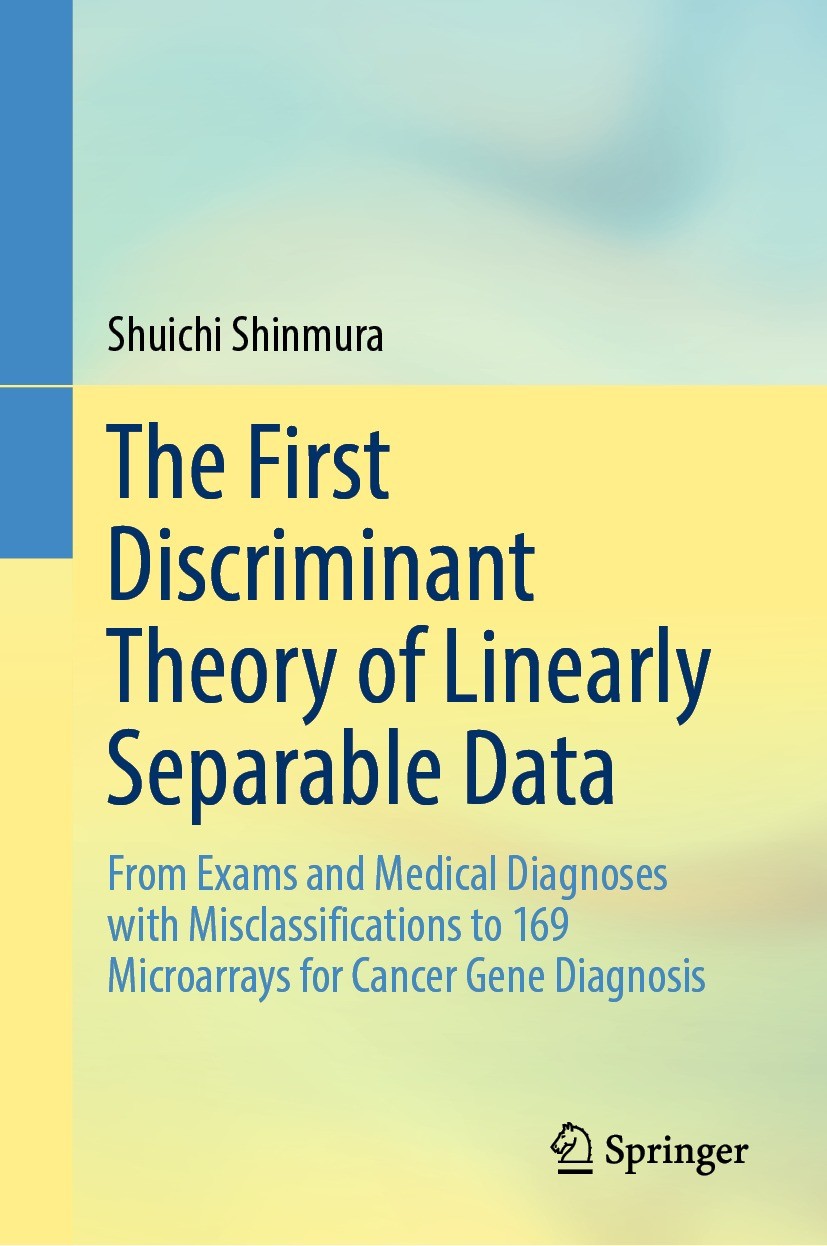| 书目名称 | The First Discriminant Theory of Linearly Separable Data | | 副标题 | From Exams and Medic | | 编辑 | Shuichi Shinmura | | 视频video | http://file.papertrans.cn/910/909755/909755.mp4 | | 概述 | Helps physicians obtain complete diagnostic results for cancer.Helps teachers and engineers evaluate and solve pass/fail determinants.Integrates knowledge of statistics and mathematical programming wi | | 图书封面 |  | | 描述 | .This book deals with the first discriminant theory of linearly separable data (LSD), Theory3, based on the four ordinary LSD of Theory1 and 169 microarrays (LSD) of Theory2. Furthermore, you can quickly analyze the medical data with the misclassified patients which is the true purpose of diagnoses. Author developed RIP (Optimal-linear discriminant function finding the combinatorial optimal solution) as Theory1 in decades ago, that found the minimum misclassifications. RIP discriminated 63 (=2.6.−1) models of Swiss banknote (200*6) and found the minimum LSD: basic gene set (BGS). . .In Theory2, RIP discriminated Shipp microarray (77*7129) which was LSD and had only 32 nonzero coefficients (first Small Matryoshka; SM1). Because RIP discriminated another 7,097 genes and found SM2, the author developed the Matryoshka feature selection Method 2 (Program 3), that splits microarray into many SMs. Program4 can split microarray into many BGSs. Then, the wide columnLSD (Revolution-0), such as microarray (n | | 出版日期 | Book 2024 | | 关键词 | Revolutionary Discriminant Theory; Linearly Separable Data; Industrial Products Evaluation; Various Rat | | 版次 | 1 | | doi | https://doi.org/10.1007/978-981-99-9420-5 | | isbn_softcover | 978-981-99-9422-9 | | isbn_ebook | 978-981-99-9420-5 | | copyright | The Editor(s) (if applicable) and The Author(s), under exclusive license to Springer Nature Singapor |
The information of publication is updating

|
|
 |Archiver|手机版|小黑屋|
派博传思国际
( 京公网安备110108008328)
GMT+8, 2025-12-29 17:15
|Archiver|手机版|小黑屋|
派博传思国际
( 京公网安备110108008328)
GMT+8, 2025-12-29 17:15


